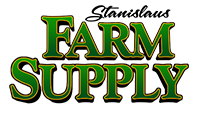Heat Stress: Help Your Livestock Beat the Heat This Summer
- July 5, 2016
-
Corri Silveira
- Cattle, Livestock, News, Ruminets
- 4-H, animal health, drought, FFA, heat stress, hot, junior livestock, livestock, managing, overheated, summer, water
- No Comments

Although this year’s El Niño provided us some mild relief from our recent bout of dry spells, there is still a concern and need to properly manage heat stress and other environmental conditions for your livestock.
Intense summer heat (much like what we experienced at the end of June) combined with drought conditions make cattle and other livestock especially susceptible to heat stress.
An animal’s body heat is maintained in various ways such as conduction, convection and radiation. Conduction is the transfer of heat through physical contact – laying on a cool floor for instance. Convection is the movement of heat from the animal’s body to the air while radiation is the emission of heat to and from the animal’s surroundings, directly from the sun. Evaporation is the transfer of heat through the conversion of liquids to a gas. This is often considered the most efficient heat transfer; however, considering many livestock do not sweat, it may not be the most effective.
By knowing the different ways in which heat either escapes or enters the animal’s body we can begin addressing ways to manage these conditions in our livestock. Remember, when we ignore heat stress we take a risk. An over heated animal is not maximizing its metabolism and thus poorly converting food to energy. This has an impact on weight gain, performance, egg production in poultry – you name it and I can pretty much assure you that high heat conditions will affect your livestock operations.
So what are we looking for in Heat stressed animals? Well, that varies depending on what kind of animal we are observing. Horses and Brahman cattle will actually sweat (that’s a good indicator their hot!) but most animal’s do not. Panting, or increased respiratory rate, may be another sign to look for. When an animal is overheated they pant to expel heat through evaporation. In their publication Livestock Heat Stress: Recognition, Response and Prevention (Kerr, 2015), Washington State University Extension mentions these other signs of heat stress to look for:
- Crowding around water tanks or shade
- Lethargy – “slow and lazy”
- Poor appretite
- Drooling or slobering
- Staggering
- Non-respensiveness
- Elevated heat rate
- Collapse
It’s also important to note that various animals become susceptible to stress at various temperatures with cattle being the most sensitive – partially due to their large size. That said, according to an article in Livestock Production Science “qualifying the severity of heat stress according to panting rate… appears to be the most accessible and easiest method for evaluating the conditions; all it requires is direct observations and a watch.” (Silanikove 2000).
Now that we know what we are looking we can take precautionary measures to prevent heat stress from occurring in the first place. Cattlenetwork.com gives some good advice in reminding us that the darker an animal’s coat the more susceptible they become to the over heating. Additional tips include:
- Keep water as cool as possible (locate in shade or erect a shade structure) and provide 1 gallon per 100/lb and double in extreme heat.
- Shear sheep in the Spring, allowing the wool to grow back slightly. This cushion around the animal actually shades the skin and reduces sunburns.
- Avoid working animals in the hottest part of the day.
- Invest in fans
- Provide as much shade as possible such as trees, or structures, but avoid putting cattle and other livestock in a barn as there is oven reduced airflow and intensified heat from congregating.
- provide mounds in pasture. Cattle will seek the top of mounds to be cooled by the air circulation.
- Time your feedings. Dr. Larry Hollis, professor and extension beef veterinarian at Kansas State University’s Department of Animal Sciences and Industry remind us to also consider the metabolic heat load of livestock which peaks at around 4 hours in cattle. This means that if we feed them in the morning or mid-day they struggle with that heat load 4 hours later. Hollis recommends feeding a grain dominant diet in the evening or late afternoon as hay increases metabolic heat load (Hadachek, 2013).
- Get water on the animals. Use sprinklers in the field for cattle and mist units for pigs. A fine mist will often raise the humidity level ad make conditions worse for cattle. Larger droplet side allow water to reach the skin.
- lastly, Make fly control a priority! Flies cause cattle to bunch up and when doing so they can not dissipate heat effectively.
I hope this information was useful, and while it primarily addressed concerns with cattle, note that many of the above methods can be adapted to any livestock animal. Just use common sense and be careful when cooling off animals. Remember the smaller the animal is the more important it is to gradually reduce their heat load so as to avoid shock created from dramatic temperature changes.
Be safe, stay cool and happy handling!
Sources:
Hadachek, A (2013, Aug. 6). Keeping cattle cool in summer heat critical. The Fence Post. Last retrieved on July 5, 2016 from http://www.thefencepost.com/news/agnews/7444675-113/cattle-heat-hollis-hot.
Kerr, S. (2015). Livestock heat stress: recognition, response, and prevention. Washington State University Extension Fact Sheet – FS157E. Last retrieved on July 5, 2016 from http://cru.cahe.wsu.edu/CEPublications/FS157E/FS157E.pdf.
Sanders, C (2015, June 26). Tips for keeping livestock comfortable in summer heat. University of Arkansas Extension. Last retrieved on July 5, 2016 from http://www.cattlenetwork.com/advice-and-tips/cowcalf-producer/tips-keeping-livestock-comfortable-summer-heat.
Silanikove, N. (2000). Effects of heat stress on the welfare of extensively managed domestic ruminants. Livestock production Science 67: 1-18. http://tinyurl.com/on4zv3v.
